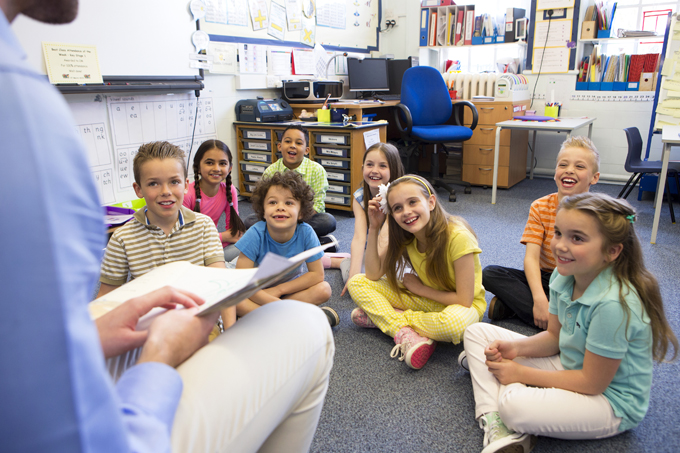
This Friday, February 1, 2019, marks the 10th annual World Read Aloud Day (WRAD)—a global movement that highlights the importance of reading aloud and sharing stories. Founded by the nonprofit LitWorld and sponsored by Scholastic, the event is celebrated by millions of people in more than 100 countries.
In ILA’s recent literacy leadership brief describing the power of read-alouds, the brief’s author, Molly Ness, asserts that “reading aloud is undoubtedly one of the most important instructional activities to help children develop the fundamental skills and knowledge needed to become better readers.” In addition to important academic benefits such as improved vocabulary, listening comprehension, story schema, background knowledge, word recognition skills, and cognitive development, read-alouds “promote a love of literature, foster social interactions, and ignite a passion for lifelong reading habits.”
For many educators across the world, the event is an opportunity to engage students in discussion about the importance of global literacy and the dangers of illiteracy, build cross-cultural connections, and have fun.
If you have yet to make plans for the day, don’t worry—the following resources offer inspiration and ideas for educators looking to harness the power of read-aloud.
- ILA’s recent brief, The Power and Promise of Read-Alouds and Independent Reading, outlines recommendations for optimizing the benefits of read-alouds and independent reading.
- TeachHUB’s list includes read-aloud book recommendations, parent–child resources, Skype activities, and more.
- Scholastic's World Read Aloud Day kit offers great ideas for planning an interactive read-aloud event centered on family and parent engagement.
- Larry Ferlazzo’s blog post “The Best Resources for World Read-Aloud Day” is a compilation of evergreen read-aloud tips, tools, and strategies.
- In this powerful video, author Kate DiCamillo “offers her humble opinion on the universal and age-defying magic of listening to a shared story.”
- Skype with an author using Kate Messner’s working list of fellow authors who have volunteered to spend part of the day Skyping with classrooms around the world to share the joy of reading aloud.
- The video discussion platform Flipgrid has designed five global read-aloud projects that allow students to “see the power of connection, experience other languages and cultures, and see the world through a different lens.”
- ILA’s January Twitter chat, “The Right to Read Aloud: Teachers’ Voices Around Best Practices,” explored ways in which educators can intentionally choose read-alouds as a way of broadening students’ perspectives and cultural experiences. The conversation is archived here.
- Connect with other educators across the world and exchange WRAD ideas using this Google Doc created by Shannon Miller, Andy Plemmons, and Matthew Winner.
- ReadWriteThink.org published several WRAD-themed lesson plans, PD resources, and activities and projects for students of all ages.
Alina O’Donnell is the communications strategist at ILA and the editor of Literacy Daily.